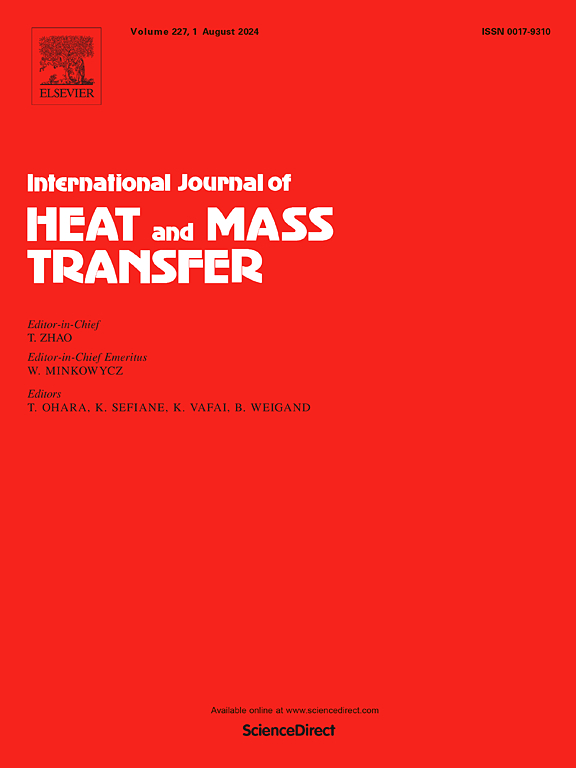On the non-dimensional area of influence and its influence within the Rensselaer Polytechnic Institute (RPI) wall boiling model
IF 5
2区 工程技术
Q1 ENGINEERING, MECHANICAL
International Journal of Heat and Mass Transfer
Pub Date : 2025-04-26
DOI:10.1016/j.ijheatmasstransfer.2025.127112
引用次数: 0
Abstract
A computationally inexpensive method of determining the non-dimensional area of influence and the quenching correction factor as a function of wall superheat, for numerical implementation in multiphase Eulerian computational fluid dynamics simulations, is presented. Clarity is provided on the origin of the non-dimensional area of influence in the Rensselaer Polytechnic Institute (RPI) wall boiling model and its implementation to date. Thereafter, a method of approximating the non-dimensional area of influence in the RPI model is proposed based on the results of a Monte Carlo simulation aimed at mimicking the distribution of nucleation sites and their overlapping area of influence. The influence of bubble growth and overlapping areas of influence on the quenching correction factor (commonly referred to as the ”bubble waiting time coefficient”) is discussed and analytical models developed. Results indicate that the quenching correction factor increases (in the range of 1-1.8) with increased wall superheat (2-20 K). This stands in contrast with the commonly used value of one in literature. These findings are incorporated into multiphase Eulerian numerical model and the results are compared against an experimental case considering submerged cryogenic jet impingement boiling. The proposed correlations for the non-dimensional area of influence and quenching correction factor result in an improvement of the wall superheat root mean squared error from 4.992 to 1.378 K.
伦斯勒理工学院(RPI)壁面沸腾模型的无量纲影响区及其影响
本文提出了一种计算成本较低的方法,用于多相欧拉计算流体动力学模拟的数值实现,可以确定非量纲影响面积和作为壁过热度函数的淬火校正系数。澄清了伦斯勒理工学院(RPI)壁面沸腾模型中无量纲影响区域的起源及其迄今为止的实施。随后,基于蒙特卡罗模拟的结果,提出了一种逼近RPI模型中无量纲影响区域的方法,旨在模拟成核位点的分布及其重叠影响区域。讨论了气泡生长和重叠影响区对淬火校正系数(通常称为“气泡等待时间系数”)的影响,并建立了分析模型。结果表明,随着壁面过热度(2 ~ 20 K)的增加,淬火校正系数增大(在1 ~ 1.8范围内),这与文献中常用的值1相反。将这些结果纳入了多相欧拉数值模型,并与考虑浸没低温射流撞击沸腾的实验结果进行了比较。提出的无量纲影响面积与淬火校正因子的相关性,使壁面过热度均方根误差从4.992提高到1.378 K。
本文章由计算机程序翻译,如有差异,请以英文原文为准。
求助全文
约1分钟内获得全文
求助全文
来源期刊
CiteScore
10.30
自引率
13.50%
发文量
1319
审稿时长
41 days
期刊介绍:
International Journal of Heat and Mass Transfer is the vehicle for the exchange of basic ideas in heat and mass transfer between research workers and engineers throughout the world. It focuses on both analytical and experimental research, with an emphasis on contributions which increase the basic understanding of transfer processes and their application to engineering problems.
Topics include:
-New methods of measuring and/or correlating transport-property data
-Energy engineering
-Environmental applications of heat and/or mass transfer

 求助内容:
求助内容: 应助结果提醒方式:
应助结果提醒方式:


